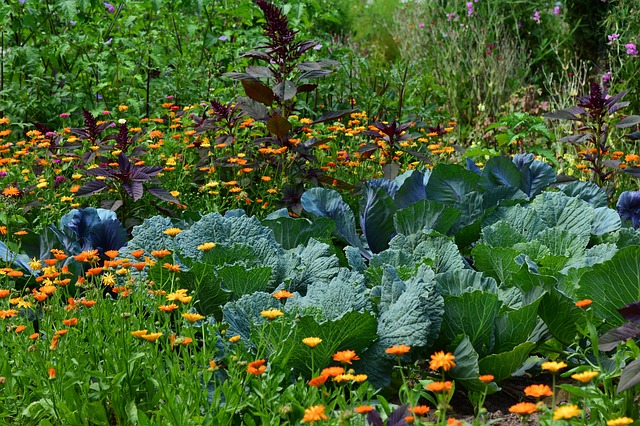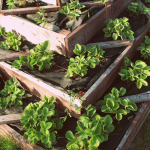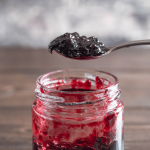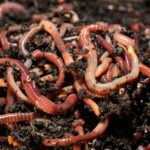Fostering Forests: The Miyawaki Method Meets Hugelkultur
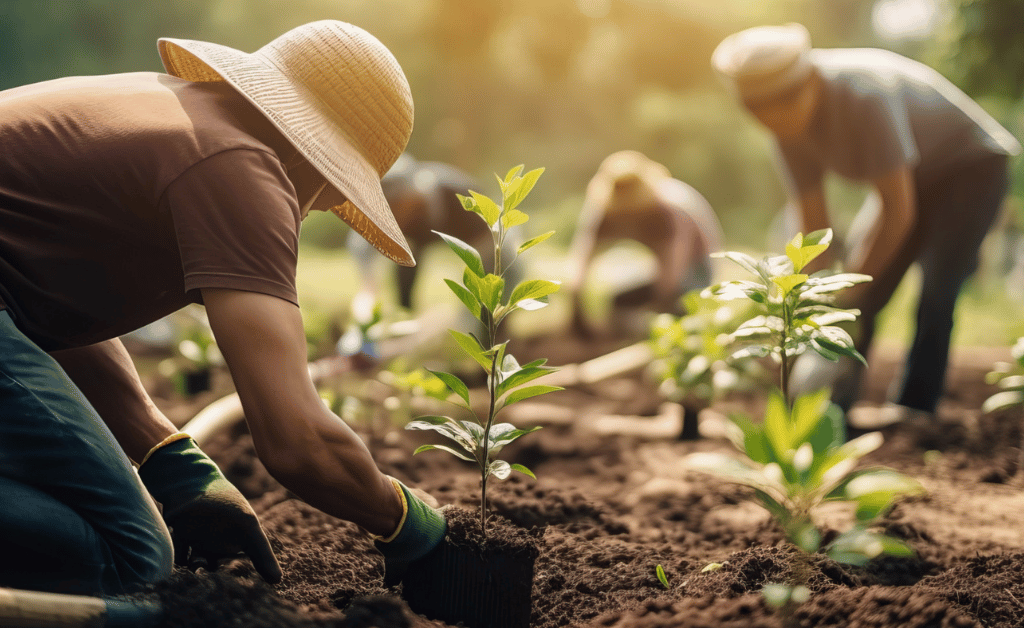
The Miyawaki Method, pioneered by Japanese botanist Akira Miyawaki, is a revolutionary afforestation technique that facilitates the rapid growth of urban forests. Through a series of carefully orchestrated steps, this method transforms barren lands into lush green forests within 20 to 30 years—a stark contrast to the centuries-long growth of conventional forests. On the other hand, Hugelkultur, a sustainable gardening practice rooted in age-old traditions, focuses on creating raised garden beds using decomposed wood and other organic materials. The core essence of Hugelkultur lies in its ability to retain moisture, enrich soil fertility, and promote a biodiverse ecosystem. This article aims to explore the intersection of these two innovative methods and their potential synergies in promoting rapid afforestation and sustainable gardening.
The Intersection of Hugelkultur and the Miyawaki Method
Soil Preparation and Its Impact on Rapid Afforestation
One of the fundamental steps in both the Miyawaki Method and Hugelkultur is soil preparation. A well-prepared soil forms the foundation for healthy plant growth, rapid afforestation, and long-term sustainability. Both methods emphasize the importance of enriching the soil with organic matter to create a fertile ground for plants to thrive.
Benefits of Soil Preparation How Hugelkultur Complements the Miyawaki Method Enhanced soil fertility Provides a rich base of organic matter Improved water retention Utilizes woody debris to retain moisture Promoted microbial activity Encourages soil biodiversity Key Takeaway Table In particular, the role of earthworms in enhancing soil fertility is crucial. Earthworms aid in breaking down organic matter, thus enriching the soil with essential nutrients. Moreover, their burrowing action helps in aerating the soil, which in turn, facilitates the percolation of water. The article The Role of Earthworms in Sustainable Gardening and Agriculture delves into the multifaceted benefits of earthworms in sustainable gardening practices.
Additionally, raised bed gardening, as practiced in Hugelkultur, is an effective solution for growing a variety of plants, including trees. Raised beds offer numerous advantages such as better drainage, soil aeration, and a warmer soil temperature, which are conducive for rapid plant growth. For a more detailed discussion on this, the article Raised Bed Gardening: The Perfect Solution for Growing Strawberries offers valuable insights.
Plant Selection for Optimized Growth
The cornerstone of both the Miyawaki Method and Hugelkultur lies in selecting the right species of plants that are native and locally adapted to the environment they will be planted in. The right selection of plant species is essential for the success and sustainability of the afforestation or gardening project. However, this step demands a thorough research process to identify the native plants that would thrive in the given local conditions. Below are some guidelines and resources that can serve as a starting point for this research:
- Observation and Local Resources: Begin by observing native plants in their natural habitats to understand which species are well-adapted to your region’s climate and soil conditions. However, in places like Norway, where virtually no natural forests remain (source), merely observing what grows nearby may not provide a true representation of native species. In such cases, the vegetation observed might be what thrives rather than what is native. Utilize local resources such as community species lists, and local or regional sources for native plant materials and seeds to get a more accurate understanding of native vegetation.
- Selecting for Local Genotype: Choose native plants and seeds from local or regional sources with similar environmental conditions to your planting site. This approach enhances the likelihood of successful growth and sustainability of the plants in your project.
- Native Plant Material Selection Guides: Leverage guides and resources that aid in selecting native plant materials suited for restoration projects. These guides can provide crucial information on ensuring local adaptation and maintaining genetic diversity in your project.
- Setting Clear Objectives: The success of your project hinges not only on selecting the right species but also on having clear and realistic objectives for the site. A well-defined goal will steer the selection process, ensuring that the chosen plants meet the desired outcome of the project.
- Consultation with Local Experts: Engage with local horticulturists, botanists, or native plant societies to garner advice on the best native plants for your system. Their expertise and experience in the region can provide valuable insights and recommendations.
- Online Forums and Communities: Participate in online forums and communities related to afforestation, permaculture, and native plant gardening. Sharing experiences and gaining insights from others who have undertaken similar projects can be invaluable.
Utilizing a combination of the above resources and guidelines can significantly streamline the process of selecting the right native plants for your afforestation or gardening project. Whether you are employing the Miyawaki Method for rapid afforestation or embracing Hugelkultur for sustainable gardening, a meticulous plant selection process is paramount. This will not only ensure the success of the project but also contribute to the restoration of local biodiversity and the provision of various ecosystem services.
Commercial Viability of Combining Hugelkultur and Miyawaki Method
The fusion of Hugelkultur and the Miyawaki Method also presents a compelling case for commercial viability. By amalgamating the rapid afforestation potential of the Miyawaki Method with the sustainable gardening practices of Hugelkultur, it’s possible to develop commercially viable projects that are not only profitable but also environmentally sustainable.
Cost-Benefit Analysis Long-term Sustainability Insights Lower maintenance costs Self-sustaining forests over time Increased biodiversity Positive impact on local ecosystems Enhanced soil fertility Reduced reliance on chemical fertilizers and pesticides Key Takeaway Table of Combining Hugelkultur and Miyawaki Methods
Exploring the commercial aspect, the article Can Hugelkultur be Sustainable as a Commercial Solution? delves into the potential of Hugelkultur in a commercial setting. It discusses the sustainability of this method when scaled up to a commercial level, and how it can complement the Miyawaki Method in creating self-sustaining forests that require minimal maintenance.
Common Challenges and Solutions
Every innovative method comes with its own set of challenges, and both Hugelkultur and the Miyawaki Method are no exceptions. Addressing common issues and finding effective solutions is crucial for the success of sustainable afforestation projects.
Pest Problems
One common issue is the prevalence of pests which can potentially hinder the growth of the newly planted trees and plants. In the article Hugelkultur ant problems, various challenges posed by ants in Hugelkultur beds are discussed along with potential solutions to mitigate these problems.
Adaptability to Different Climatic Conditions
The effectiveness of these methods can also vary with different climatic conditions. For instance, the article How useful would a Hugelkultur bed be in a very dry climate? explores the adaptability of Hugelkultur beds in arid climates and provides insights on how to maximize the benefits of this method in such conditions.
Key Takeaway Table
Common Challenges Proposed Solutions Pest Infestations Employing natural predators, Using organic repellents Climate Adaptability Modifying techniques to suit local conditions
Visual Comparison: Miyawaki Method vs Standard Tree Planting
As explored throughout this article, the Miyawaki Method stands as a revolutionary approach to urban forestry, promoting the growth of dense, native forests in urban landscapes. The method’s effectiveness in accelerating tree growth, boosting biodiversity, and providing a plethora of ecosystem services is unparalleled. To further elucidate the practical applications and benefits of the Miyawaki Method, we present an enlightening video detailing a trial plot in Kent, UK.
The Miyawaki Method: A Revolutionary Approach to Urban Forestry
The video offers a vivid glimpse into the practical implementation of the Miyawaki Method at Parkwood Recreation Ground in Kent. Historically a woodland area, this plot was cleared post-World War II for housing development, leaving behind degraded and compacted soil from its days as a builder’s yard.
Experimental Design
The trial plot showcases a comparative study between the Miyawaki-style planting and a control plot, with a three-meter gap separating the two. Initiated in February 2021, the Miyawaki side, now in its third summer, demonstrates accelerated growth owing to meticulous soil preparation and a dense planting design.
Key Findings
Some key takeaways from the trial include a remarkable 99% survival rate on the Miyawaki side even under severe drought conditions, as opposed to a 75% survival rate in the control plot. Additionally, the Miyawaki plot boasts double the biodiversity, attracting a variety of wildlife including rare fungi like the “hair’s foot ink cap.” Cost-wise, establishing trees on the Miyawaki side proved to be 30% cheaper, primarily due to the higher survival rate.
The success witnessed in this trial has spurred the replication of Miyawaki plots in other regions like Norfolk, Cornwall, and Chichester, underscoring the method’s promise in urban forestry.
Video Insight
We invite you to watch the video and witness first-hand the astonishing growth and myriad benefits associated with the Miyawaki Method.
This visual exposition reinforces the significant advantages of adopting the Miyawaki Method in urban areas, contributing to sustainable urban development. As we reflect on the synergy between the Miyawaki Method and Hugelkultur, the insights gained from this video further underline the immense potential that these methods hold in fostering a greener future.
Conclusion
The journey through the principles and practical applications of the Miyawaki Method, alongside its synergies with Hugelkultur, has unveiled a holistic approach to rapid afforestation and sustainable gardening. The video from the trial plot in Kent, UK, not only served as a compelling visual testimony to the effectiveness of the Miyawaki Method but also provided tangible evidence of its benefits like accelerated tree growth, enhanced biodiversity, and cost-effectiveness, especially when compared to standard tree planting methods.
Furthermore, the video accentuates the Miyawaki Method’s adaptability and success in urban settings, bringing to light its potential in offering ecosystem services such as carbon absorption, air and noise pollution buffering, and rainfall absorption. The replication of Miyawaki plots in other regions like Norfolk, Cornwall, and Chichester underscores the method’s replicability and promise in fostering sustainable urban development.
The juxtaposition of Hugelkultur’s sustainable gardening practices with the Miyawaki Method’s rapid afforestation potential presents a promising solution to the environmental challenges faced by urban areas. The internal links and video provided throughout this article offer a gateway for readers to delve deeper into the intricacies of these methods and their application in sustainable gardening and afforestation projects.
As we step into a future where green, sustainable solutions are imperative, the synergy between the Miyawaki Method and Hugelkultur holds the promise of a greener, more sustainable urban landscape. We encourage readers to explore the links, watch the video, share their experiences, and join the global movement towards creating environmentally sustainable urban forests.

